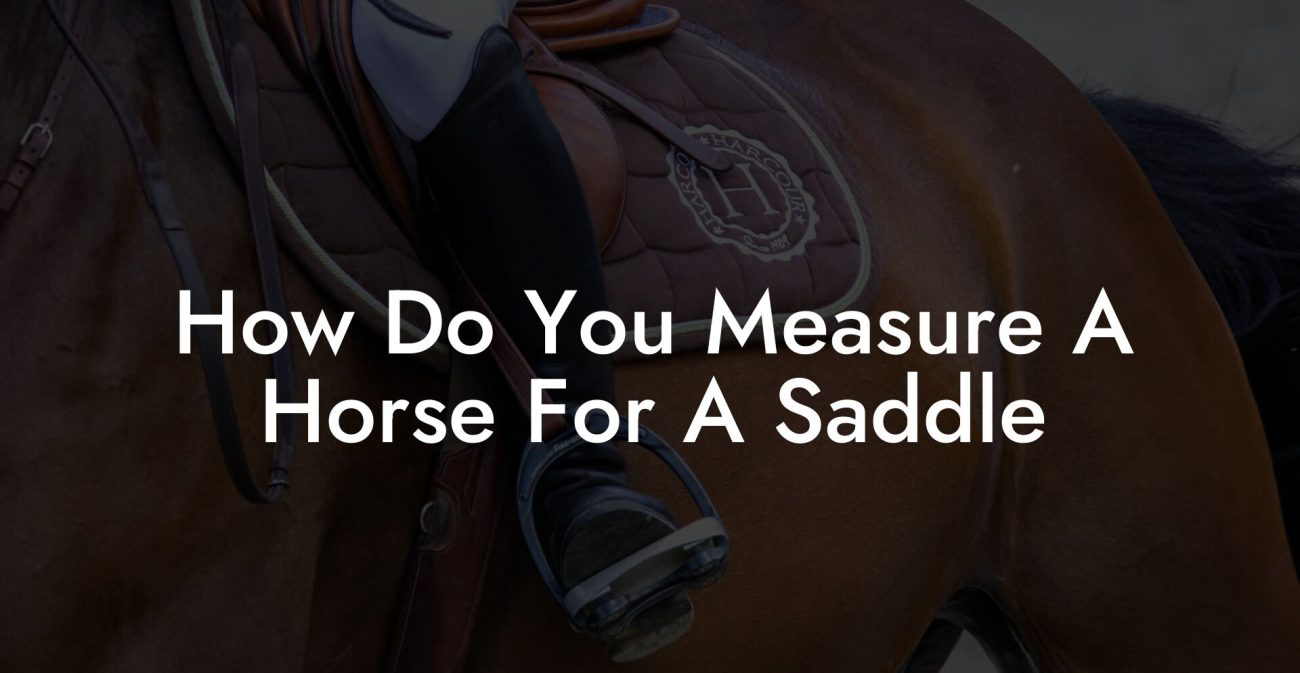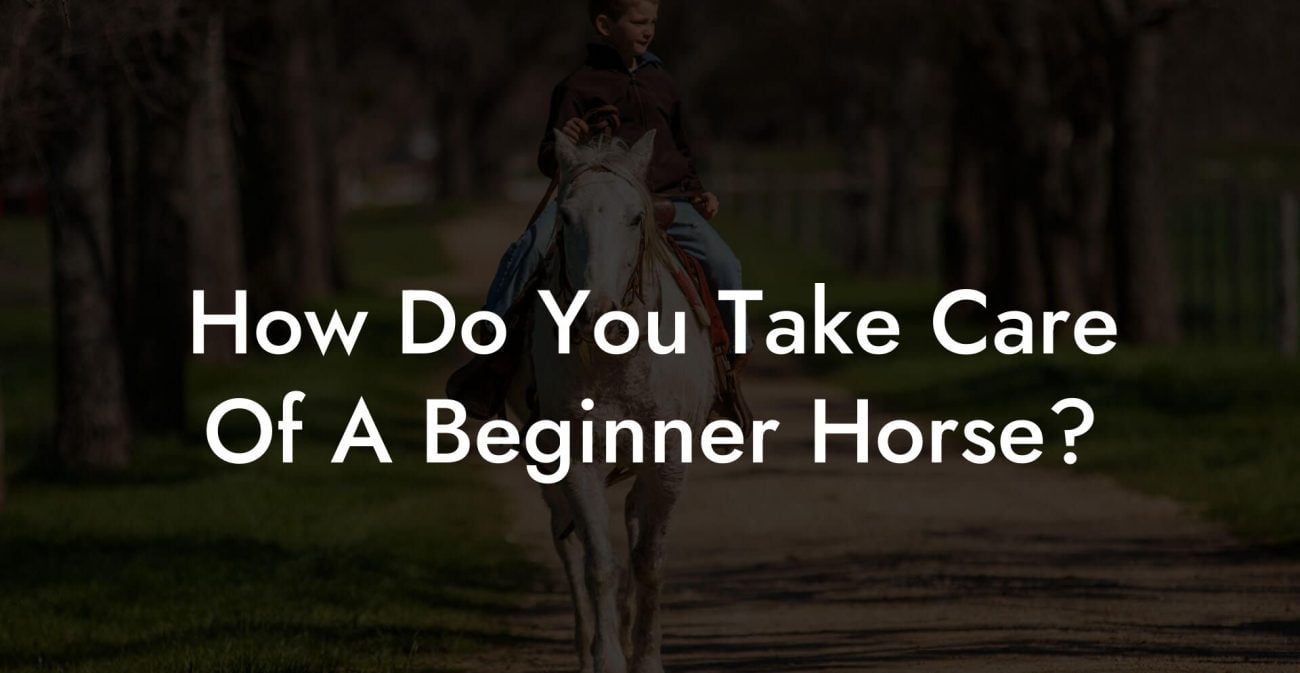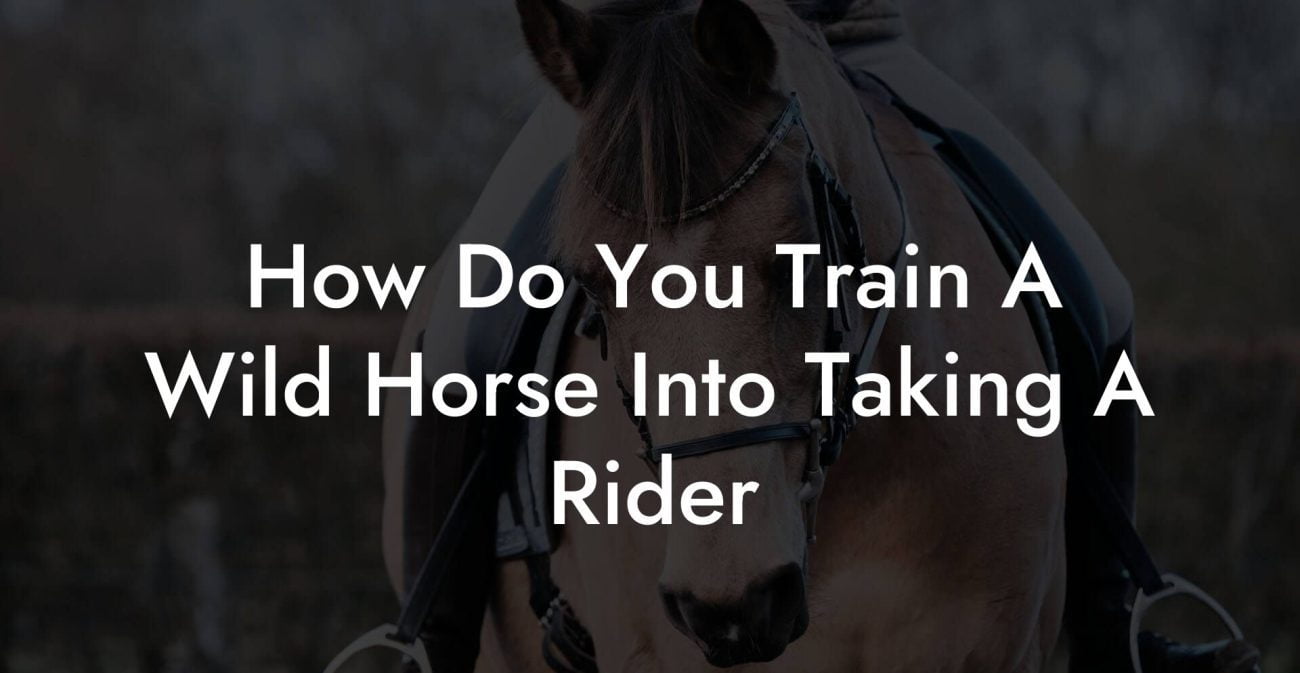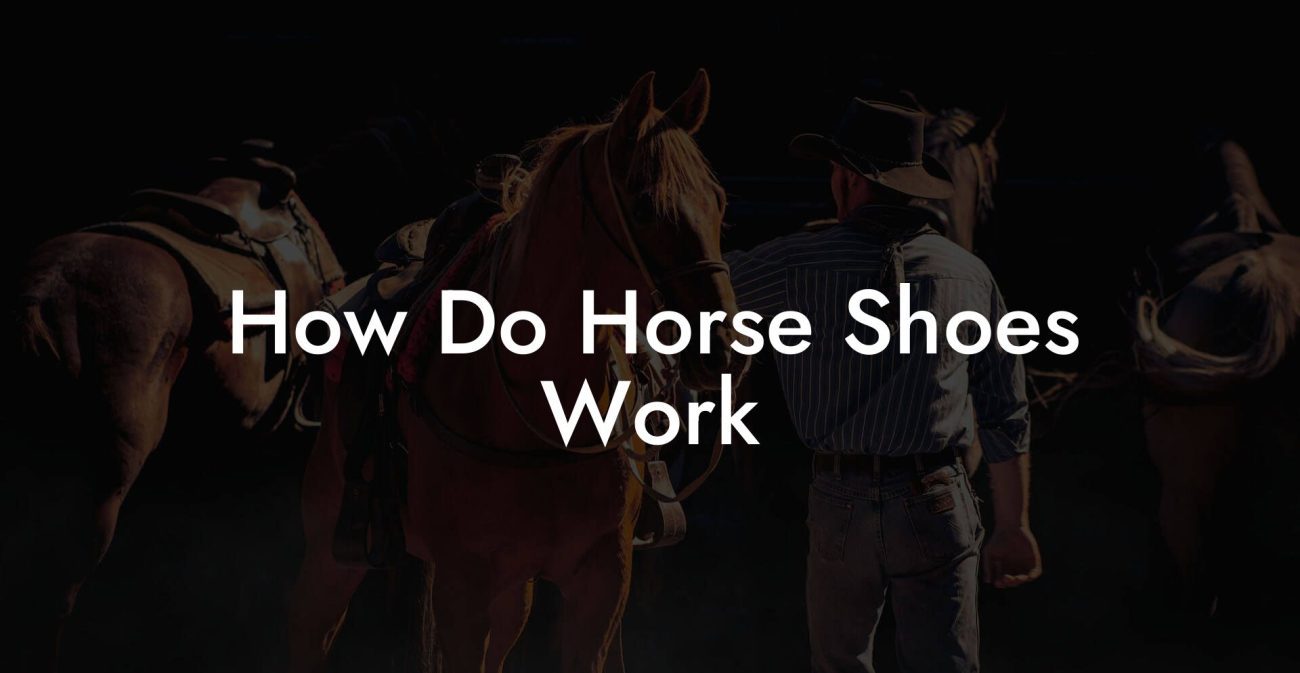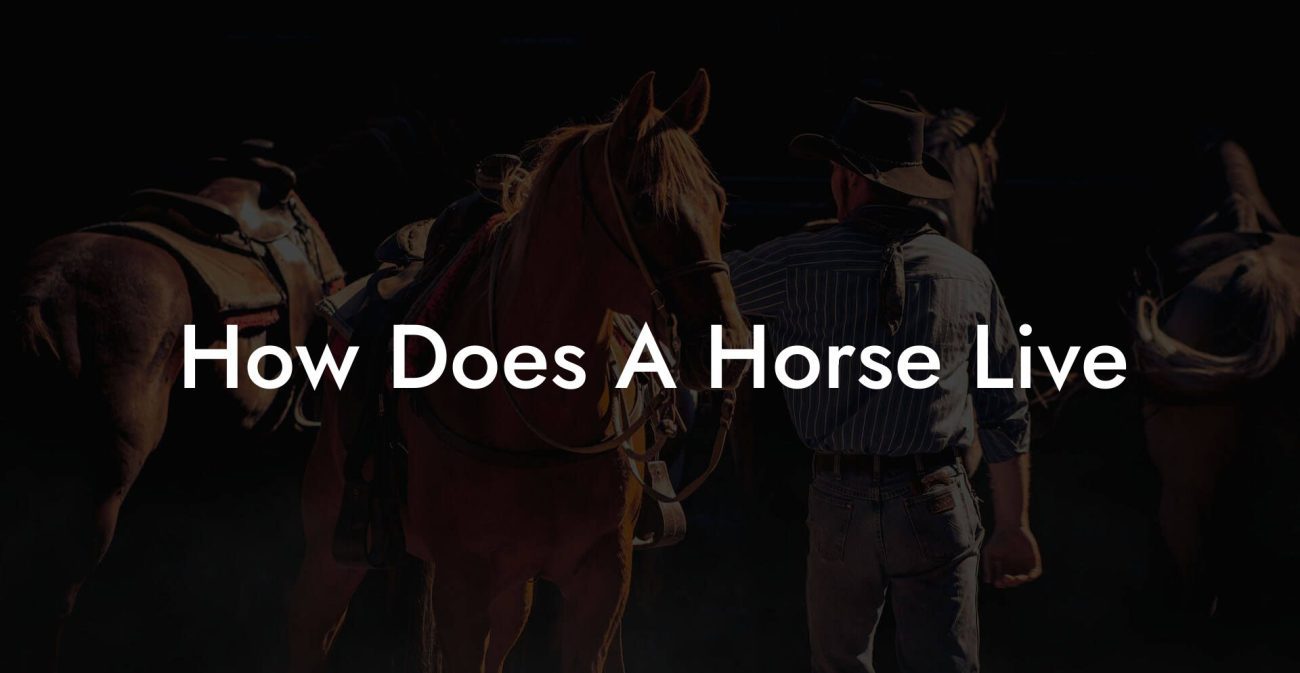Saddle up and get ready to channel your inner equestrian influencer, this isn’t your grandma’s stable routine. Whether you’re trotting into your second season of horse care or you've finally graduated from the “I can hold the reins” club, becoming an Intermediate Horse Rider is a wild ride filled with adventure, practical tips, and plenty of “OMG, I can do that!” moments. Grab your hoodie, your TikTok-approved riding boots, and let’s gallop into the nitty-gritty of caring for your majestic four-legged BFF.
Quick Links to Useful Sections
- The World of Intermediate Horse Riding: More Than Just Arousing Neighs
- Understanding Your Role as an Intermediate Horse Rider
- Daily Horse Care: A Routine That’s Anything But Boring
- Morning Rituals and Pre-Ride Check-Ups
- Feeding and Hydration: The Fuel for Finesse
- Exercise and training Management
- Grooming and Hygiene: Keeping Your Horse Instagram-Ready
- The Essential Grooming Kit
- Detangling and Mane Care
- Hoof Care and Maintenance
- Feeding Your Equine Companion: Gourmet Dining for Horses
- Understanding Equine Nutrition
- Special Diets and Supplements
- Hydration and Its Vital Role
- Exercise and Training Techniques for the Modern Rider
- Warm-Up and Cool-Down Routines
- Incorporating Variety: Trail Rides, Arena Work, and More
- Building Trust and Communication
- Safety First: equipment, Tack, and Riding Gear Essentials
- Choosing the Right Helmet and Protective Gear
- Essential Tack Maintenance
- Stable Management and Home Care: Beyond the Barn Doors
- Designing an Equine-Friendly Stable
- DIY Stable Hacks and Maintenance Tips
- Health and Veterinary Care: Keeping Your Horse at Its Peak
- Recognizing Common Health Issues
- Building a Relationship With Your Veterinarian
- Resources and Community Support: Your Next Steps
- Intermediate Horse Rider FAQs: Your Equine Questions Answered
- Your Journey as an Intermediate Horse Rider: Embrace the Ride
The World of Intermediate Horse Riding: More Than Just Arousing Neighs
Stepping up from beginner status means you’ve already learned to say “neigh” the right way, but now it’s time to truly understand your horse’s vibe, health, and daily care routines. Intermediate horse riding is about enhancing your skills while deepening the connection between you and your equine partner. Think of it as leveling up your favorite video game character, complete with wings, hooves, and a big personality.
As an intermediate rider, you’re learning how to balance a mix of advanced handling techniques with day-to-day horse care. This journey includes not only refining your riding skills, but also mastering the art of grooming, nutrition, and stable management. Keywords like horse care, equestrian lifestyle, and riding techniques are your best friends as you navigate everything from breathtaking trail rides to those inevitable “oops” moments when your beloved steed decides to play a trick.
With a blend of humor, heart, and practical advice tailored for Gen-Z and millennial equestrians, this guide is your go-to resource for all things intermediate horse riding. Let’s dive into understanding your responsibilities, the fundamentals of horse care, and the advanced strategies that set you apart as a confident, caring rider.
Understanding Your Role as an Intermediate Horse Rider
As you transition from beginner to intermediate rider, your role evolves from simply “riding” to becoming a proactive caregiver, trainer, and ambassador for your horse’s well-being. At this stage, you’re expected to know the basics and then some, the art of reading your horse’s mood, handling routine challenges, and knowing when something’s off. Whether you’re perfecting your posture on the saddle or fine-tuning your horse’s diet, it’s a journey of continuous learning and mutual trust.
Keywords such as equestrian responsibility, advanced horse care, and rider-horse communication become part of your everyday lexicon. Your growing expertise enables you to spot subtle changes in your horse’s behavior, recognize early signs of health issues, and implement proactive solutions. It’s a blend of art and science, a place where gut instincts meet practical, research-backed strategies.
Remember, every intermediate horse rider’s journey is unique. Your experience will be peppered with hilarious mishaps (like mistaking a bucket for a snack table) and triumphant victories (mastering that tricky turn or nailing a jump). This stage is all about evolving your skills, deepening your knowledge, and, most importantly, having a blast while doing it.
Daily Horse Care: A Routine That’s Anything But Boring
Daily horse care isn’t simply about showing up and waiting for the horse to say “neigh.” It’s a structured routine that combines grooming, feeding, exercise, and health checks. A well-maintained daily routine not only keeps your horse in tip-top shape but also strengthens your bond.
Morning Rituals and Pre-Ride Check-Ups
The day starts early, just like your favorite influencer’s morning routine, but with more hay and less avocado toast. Begin with a visual inspection: check your horse’s coat, hooves, and overall demeanour. Does your horse exude that “ready for adventure” vibe, or is it exhibiting signs of discomfort, like a mysterious limp or excessive scratching?
Keywords to keep in mind: horse health, equine well-being, and early morning routines. A quick brush-down is essential to clear dirt and debris while also offering a moment of gentle bonding before the day’s adventures begin.
Feeding and Hydration: The Fuel for Finesse
Just as you wouldn’t put expired milk in your morning cereal, ensure your horse’s feed is fresh, balanced, and suited to its energy needs. Modern intermediate riders are now savvy about equine nutrition, exploring high-quality hay, grains, and even special supplements that support joint health and overall vitality.
Hydration is key. Refresh your horse’s water bucket multiple times a day to keep that thirst quenched. Use keywords such as horse nutrition, equine diet, and hydration essentials to guide your choices. And hey, if your horse ever gives you a look of disdain because you forgot the treat jar, just smile; it happens to the best of us.
Exercise and training Management
An intermediate rider makes sure that every session, whether a leisurely trot in the pasture or a challenging trail ride, is as effective as it is fun. Incorporate warm-up routines, stretching exercises, and cool-down periods to prevent injuries and keep muscles limber. Experiment with different exercises to improve both your riding skills and your horse’s athletic performance.
Remember the importance of safety gear, helmets aren’t just for Instagram-worthy snaps; they’re vital. When planning your rides, consider weather conditions, terrain, and even your horse’s mood. Using keywords like advanced riding techniques, equine fitness, and safety in riding will unlock a treasure trove of online resources and community tips.
Grooming and Hygiene: Keeping Your Horse Instagram-Ready
Grooming is more than a beauty routine, it’s a crucial aspect of horse care that ensures your steed is healthy, comfortable, and looking fabulous. For intermediate riders, mastering the grooming process means understanding not only how to make your horse's coat shine but also how to detect potential health issues along the way.
The Essential Grooming Kit
Think of your grooming kit as your horse’s very own skincare set. It should include a curry comb, a hoof pick, a soft brush, and a mane comb. Regular grooming sessions help reduce dirt accumulation, remove loose hair, and keep the skin free from irritants. And if you’re craving that satisfying ASMR moment, nothing beats the sound of a brush gliding through a silky mane.
Keywords such as horse grooming, equine hygiene, and stable care are at the heart of every good routine. While deep-tissue massages aren’t typically reserved for horses, a few well-placed strokes can help soothe their muscles and calm their mind.
Detangling and Mane Care
Horses can flaunt manes that rival any influencer’s hair tutorial, but that doesn’t mean you can skip on detangling. Use a conditioner formulated for horses and a quality comb to manage knots and prevent breakage. A smooth mane isn’t just for aesthetics, it’s a sign of overall skin health.
Regular mane care ensures that your horse not only looks picture-perfect but also prevents issues like dermatitis or fungal infections. Integrating keywords like mane maintenance, equine beauty, and grooming tips will help you discover even more specialized advice from the best in the field.
Hoof Care and Maintenance
Hoof care is where the rubber really meets the road (or rather, the dirt meets the hoof). Clean and inspect your horse’s hooves daily. Use a hoof pick to remove mud, stones, and any other debris that could cause discomfort. A healthy hoof is essential for preventing lameness and other long-term problems.
Consider scheduling regular visits from a farrier to trim hooves and check for issues like cracks or infections. Keywords such as hoof health, farrier services, and equine wellness are key to finding reputable local experts and online communities that share in your passion.
Feeding Your Equine Companion: Gourmet Dining for Horses
When it comes to feeding your horse, you’re essentially its personal chef and nutritionist rolled into one. Gone are the days of shoveling generic feed into a trough; now you get to curate a balanced menu that caters to your horse’s specific needs, lifestyle, and taste.
Understanding Equine Nutrition
Just like you wouldn’t survive on fast food alone, horses need a tailored diet that balances carbohydrates, proteins, and fats. High-quality hay is the foundation of most equine diets. Complement this with grains, pellets, and occasional treats to add variety and additional nutrients.
Keywords such as equine nutrition, balanced diet for horses, and horse feeding guide are more than buzzwords, they’re essential components of your everyday practice. Advanced riders often consult with equine nutritionists to fine-tune diets based on seasonal changes, workload, and even your horse’s age.
Special Diets and Supplements
Depending on your horse’s activity level and health status, you might need to incorporate supplements like joint support formulas, vitamins, or omega-3 fatty acids. These supplements help maintain muscle and joint health, especially for active riders and horses engaged in regular, intense exercise.
Look for keywords like performance feeding, equine supplements, and dietary balance when researching products and planning your horse’s meals. Not only will this optimize your horse’s energy levels, but it’ll also keep your fail-safe Instagram feed full of mouth-watering snapshots of your horse’s gourmet snacks.
Hydration and Its Vital Role
Never underestimate the power of water. Ensure your horse has access to clean, fresh water around the clock. In hotter climates or after strenuous rides, you’ll need to be even more vigilant to prevent dehydration. Hydration plays a major role in digestion, circulation, and overall health.
With keywords like horse hydration, water management, and equine diet tips, you’ll tap into a community of riders and experts sharing advice on how to manage feeding routines during different weather conditions and exercise intensities.
Exercise and Training Techniques for the Modern Rider
As an intermediate rider, you’re not just cranking out laps on an indoor arena, you’re setting the stage for a balanced, effective training regimen that benefits both you and your horse. Modern training techniques blend traditional methods with innovative practices to create a dynamic, engaging routine that pushes boundaries while ensuring safety.
Warm-Up and Cool-Down Routines
Every great ride starts and ends with a solid warm-up and cool-down session. A proper warm-up increases blood flow, loosens muscles, and mentally prepares you for the ride ahead. After your training session, a cool-down helps lengthen the muscles, reduce soreness, and signal your horse’s body to recover.
Keywords like equine exercise, horse training routines, and saddle up safety should guide your warm-up and cool-down regimens. Whether it’s a light jog in the paddock or a series of stretching exercises, these practices are essential in preventing injuries and ensuring sustainability in your training plan.
Incorporating Variety: Trail Rides, Arena Work, and More
Variety isn’t just the spice of life, it’s also the secret sauce to effective training. Mix up your sessions with a combination of trail rides, arena work, and even obstacle courses to keep your horse physically and mentally stimulated. Embrace new challenges, such as jumping small hurdles, weaving through cones, or simply experimenting with different paces.
Using keywords like advanced riding drills, equine training techniques, and agility for horses can help you tap into online tutorials and community-sourced tips. The goal is to create a training environment that’s fun, challenging, and engaging for both you and your horse, ensuring that every ride is an opportunity to learn and grow.
Building Trust and Communication
At the heart of every successful riding experience is trust and communication. Learn to read your horse’s body language, those subtle shifts, flicks of the tail, or changes in posture can speak volumes. Use these cues to adjust your approach and build a deeper, more intuitive connection.
Embrace keywords like rider communication, equine trust, and bond building as you refine your techniques. The more in sync you become with your horse, the smoother your rides will be. And if you occasionally misinterpret a nudge as a cue for a half-hearted jump, just remember: every stumble is a step toward mastery.
Safety First: equipment, Tack, and Riding Gear Essentials
In the dynamic world of intermediate riding, safety always comes first, even if you’re feeling as bold as your latest meme. From helmets that are both stylish and secure to saddles engineered for ultimate comfort, your equipment is a critical part of your daily routine.
Choosing the Right Helmet and Protective Gear
A modern helmet is about more than just safety; it’s a fashion statement. Look for options that meet safety standards while offering smart design and comfort. Along with the helmet, consider protective vests, riding boots, and gloves that not only reduce the risk of injury but also keep you looking on-trend.
Keywords such as equestrian safety, riding gear essentials, and protective tack highlight the importance of quality equipment in your daily riding routine. Investing in reliable gear means you can push your skills further without compromising on safety.
Essential Tack Maintenance
Your saddle, bridles, and reins are the unsung heroes of your riding adventures. Regular maintenance, cleaning, conditioning, and proper storage, ensures that your tack remains in tip-top shape. A well-maintained set not only performs better but also extends the life of your equipment.
Embrace keywords like tack care, equine gear maintenance, and riding equipment repair. Whether you’re a DIY enthusiast or you rely on your local tack shop, keeping your gear in pristine condition is an investment in your riding future.
Stable Management and Home Care: Beyond the Barn Doors
Being an intermediate horse rider isn’t just about what happens outside; it’s also about creating a safe, comfortable environment for your horse at home. Effective stable management translates to better health and behavior for your equine friend.
Designing an Equine-Friendly Stable
Picture your stable as the ultimate retreat for your horse, a blend of secure shelter, ample space, and smart design. Whether you’re working with a full-scale barn or a simple paddock setup, focus on proper ventilation, clean bedding, and safe storage for feed and equipment. A well-organized stable reduces stress for your horse and makes daily care tasks quicker and more efficient.
Use keywords like stable management, equine shelter design, and barn safety to search for innovative ideas and modern advancements in stable care. From eco-friendly bedding options to temperature-controlled environments, there’s a wealth of knowledge out there to transform your stable into a five-star equine resort.
DIY Stable Hacks and Maintenance Tips
When you’re not out riding epic trail routes, hone your creative side with simple DIY stable hacks. Whether it’s repurposing old materials to create clever storage solutions or crafting a custom grooming station, these projects add a personal touch to your horse’s home. Not only do they save money, but they can also be a fun way to engage with your local equestrian community.
Keywords such as DIY stable tips, home barn maintenance, and equine environment hacks are here to guide you to inspiration and practical ideas. The result is a cozy, safe stable that both you and your horse will love.
Health and Veterinary Care: Keeping Your Horse at Its Peak
Even the most Instagram-famous horses need regular check-ups and a little tender loving care. As an intermediate rider, you’re expected to be proactive about your horse’s health, recognizing early signs of illness and knowing when to call in the pros. From routine vaccinations to emergency care, staying ahead of health issues ensures that your ride stays smooth and injury-free.
Recognizing Common Health Issues
Learn to spot the subtle signs that your horse might be under the weather. Whether it’s a change in appetite, unusual behavior, or a mysterious limp, early detection is key to prompt treatment. Keep an eye out for terms like colic, lameness, and skin conditions.
With keywords such as equine health, veterinary care, and horse wellness, you’ll find a wealth of information on symptom recognition and preventive measures. Regular health assessments and open communication with your veterinarian can mean the difference between a minor hiccup and a major setback.
Building a Relationship With Your Veterinarian
Your vet isn’t just a medical professional, they’re a partner in your equestrian adventure. Developing a strong, trusting relationship with your vet means you’ll have a go-to expert for any health concerns. When it comes to vaccinations, dental care, or even routine deworming, clear communication and regular visits are essential.
Keywords like equine vet, horseback health, and preventive care underscore the importance of professional guidance. After all, your horse’s well-being is a shared priority, and nothing beats the confidence that comes with knowing you’re in good hands.
Resources and Community Support: Your Next Steps
The journey of an intermediate horse rider is filled with opportunities to learn, network, and share experiences with like-minded equestrians. Whether you’re tapping into online forums, following expert blogs, or attending local equine events, community support is a vital component of your growth.
Connect with influencers who dish out the latest tips on horse care, riding techniques, and stable management. Engage in social media groups that focus on horse riding adventures, and don’t be surprised if you find yourself sharing memes, hilarious mishaps, and success stories with riders from around the globe.
Keywords like equestrian community, horse riding forums, and online horse care resources are your gateways to a treasure trove of advice, support, and inspiration. Your next steps might include webinars, local tours, or even hands-on workshops that help you refine your skills and enhance your horse care routine.
Intermediate Horse Rider FAQs: Your Equine Questions Answered
As you navigate your intermediate riding journey, you’re bound to have questions, some practical, some quirky, and some that even make you pause for a thoughtful “Hmm...” Here are a few FAQs to help clear the dust off those common queries.
1. What distinguishes an intermediate horse rider from a beginner?
Intermediate riders have honed the basics and now focus on advanced riding techniques, in-depth horse care, and stable management. They’re more confident in handling unexpected situations and developing a deeper bond with their horse.
2. How do I improve my riding and handling skills?
Practice advanced routines, seek feedback from experienced trainers, and immerse yourself in equestrian educational resources, from online tutorials to local workshops. Consistency and an eagerness to learn are key.
3. What are some essential tips for daily horse care?
Stick to a daily routine that includes checks for health and hygiene, balanced feeding, regular grooming, and proper hydration. Don’t forget quality time to bond with your horse, it makes a world of difference!
4. How can I tell if my horse is happy and healthy?
Look for signs such as a shiny coat, bright eyes, a relaxed demeanor, and consistent appetite. Regular vet check-ups also ensure that any issues are caught early.
5. What safety gear should an intermediate rider invest in?
A high-quality helmet, appropriate riding boots, and protective vests are must-haves. Additionally, ensure your tack is well-maintained to prevent mishaps during rides.
6. How do I stay current with modern horse care techniques?
Follow equestrian influencers, join online communities, subscribe to relevant blogs and newsletters, and attend equestrian events. Keywords like modern horse care, equestrian trends, and advanced riding techniques are your guides.
7. Can I adopt some DIY projects for stable management?
Absolutely! Many riders have found creative solutions for stable organization and DIY grooming stations. A little innovation goes a long way in making daily routines more efficient and fun.
8. How often should I schedule a veterinary check-up for my horse?
Routine check-ups every 6 to 12 months are recommended, though you should consult your veterinarian based on your horse’s age, activity level, and specific needs.
Every question you ask is a step towards becoming an even more informed and confident rider. Keep learning, stay curious, and never shy away from asking for advice when needed!
Your Journey as an Intermediate Horse Rider: Embrace the Ride
The road (or rather, trail) to mastering the art of intermediate horse riding is paved with milestones, laughter, and the occasional misadventure that you’ll one day laugh about. Every day is a new opportunity to refine your skills, enrich your horse’s life, and build a relationship that goes beyond words.
Embrace the learning process with the energy of a viral challenge, stay curious, be adaptive, and most importantly, have fun with it! As you explore advanced techniques, share tips with fellow equestrians, and even create your own unique training modules, you’ll find that every ride brings you a step closer to becoming the ultimate horse care guru.
So, whether you’re posting your progress on social media or quietly reveling in the serenity of a sunset ride, let your passion for horse riding shine through. You’re not just riding, you’re creating a legacy of care, skill, and connection that inspires others to jump on the saddle.
Your journey has just begun, and the trail ahead is filled with endless opportunities for growth, fun, and unforgettable moments. Embrace every stumble and every victory, they’re all part of the wild, rewarding ride of being an intermediate horse rider.
Now, go ahead and ride like you mean it, because every great story starts with one brave rider and one incredible horse.




